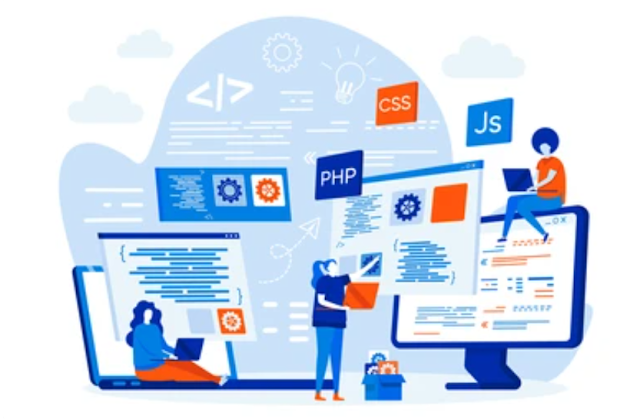The Basics of Web Development: A Beginner's Guide
In today's digital age, web development is a highly sought-after skill that empowers individuals and businesses to create and maintain their online presence. Whether you're a complete beginner or have some knowledge of programming, understanding the basics of web development is essential. This article serves as a comprehensive beginner's guide, introducing the fundamental concepts and technologies involved in web development.
Understanding Web Development:
Web development refers to the process of building and maintaining websites and web applications. It involves various elements such as front-end development, back-end development, and database management. Front-end development focuses on the visual and interactive aspects of a website, while back-end development deals with the server-side logic and database operations.
HTML: The Building Block of Web Pages:
Hypertext Markup Language (HTML) forms the foundation of every web page. HTML is a markup language that defines the structure and content of a webpage. It uses tags to mark up elements like headings, paragraphs, images, links, and more. Learning HTML is crucial for understanding the structure of web pages and creating their content.
CSS: Styling and Designing Web Pages:
Cascading Style Sheets (CSS) complements HTML by controlling the presentation and visual styling of web pages. CSS allows developers to define the colors, fonts, layout, and overall design of a website. With CSS, you can make web pages visually appealing, responsive, and consistent across different devices.
JavaScript: Adding Interactivity and Functionality:
JavaScript is a programming language that enables interactivity and dynamic functionality on web pages. With JavaScript, you can create interactive elements, handle user events, validate forms, perform calculations, and manipulate web page content on the client-side. It is a versatile language that brings life to static web pages.
Front-End Frameworks:
Front-end frameworks, such as React, Angular, and Vue.js, provide pre-built components and libraries that simplify the process of building interactive web applications. These frameworks enhance development efficiency, code reusability, and offer advanced features for creating dynamic user interfaces.
Back-End Development:
Back-end development focuses on the server-side of web development. It involves writing server-side code, handling requests, processing data, and interacting with databases. Popular back-end programming languages include PHP, Python, Ruby, and Java. Frameworks like Node.js enable JavaScript to be used on the server-side as well.
Databases and Data Management:
Web applications often require databases to store and retrieve data. Databases like MySQL, PostgreSQL, and MongoDB are commonly used in web development. Understanding database concepts, creating database schemas, and performing CRUD operations (Create, Read, Update, Delete) are essential skills for back-end developers.
Version Control and Collaboration:
Version control systems, such as Git, are essential tools for web developers. They allow for efficient code management, tracking changes, collaborating with team members, and easily reverting to previous versions if needed. Understanding the basics of version control is essential for effective web development workflows.
Web Hosting and Deployment:
Once a website or web application is developed, it needs to be hosted on a server to make it accessible on the internet. Web hosting involves configuring server settings, uploading files, and managing domain names. Understanding the deployment process is crucial to make your web project accessible to users worldwide.
Continuous Learning and Growth:
Web development is a rapidly evolving field, with new technologies and frameworks emerging regularly. As a web developer, it's important to cultivate a mindset of continuous learning. Stay updated with industry trends, follow reputable online resources, join developer communities, and participate in online courses or coding bootcamps to enhance your skills.
Conclusion:
Web development is an exciting and rewarding field that empowers individuals and businesses to create remarkable online experiences. By understanding the basics of HTML, CSS, JavaScript, front-end frameworks, back-end development, databases, version control, and web hosting, you lay a strong foundation for your journey into web development. Remember, practice, hands-on experience, and a thirst for continuous learning are key to becoming a proficient web developer. Embrace the challenges, explore new technologies, and enjoy the journey of creating dynamic and impactful websites and web applications.












